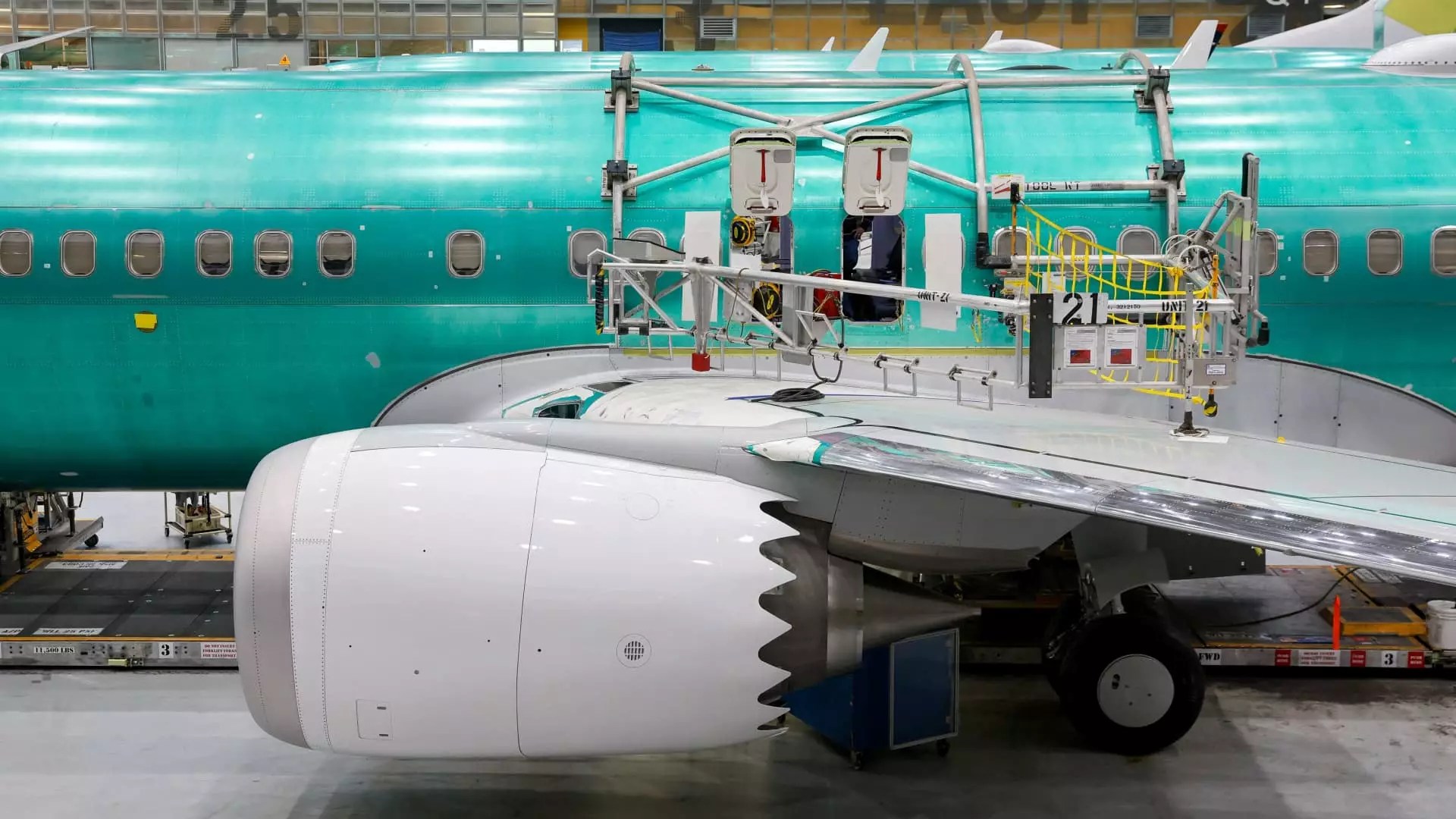In the world of aerospace manufacturing, few names resonate as strongly as Boeing. However, the company’s recent history has been marred by a series of safety and quality concerns, leading to a steep decline in stock value and reputation. The catalyst for this upheaval was a harrowing incident involving a Boeing 737 Max 9 operated by Alaska Airlines, in which a fuselage panel blew out mid-flight. Fortunately, the emergency landing in Portland, Oregon, resulted in no serious injuries, but it did raise alarms about the integrity of Boeing’s manufacturing processes. With Boeing’s stock down over 30% amid a recovering stock market, the company is now re-evaluating its operational strategies and corporate culture to restore both its financial health and public trust.
The Federal Aviation Administration (FAA) has imposed stricter oversight on Boeing, especially concerning the production of its renowned 737 Max line. This ongoing supervision stems from the fallout of two tragic crashes that claimed 346 lives due to a flawed flight-control system. The FAA recently capped Boeing’s production rate, a move meant to give the company the breathing room it desperately needs to focus on quality improvements rather than quantity. As FAA Chief Mike Whitaker aptly noted, a “fundamental cultural shift” is required at Boeing—this change must prioritize safety and quality over profits. Such a commitment entails not only adhering to regulatory demands but fostering an internal environment where concerns about safety are paramount.
In the wake of these challenges, Boeing has seen a significant overhaul in its leadership structure. The appointment of Kelly Ortberg as the new CEO, succeeding Dave Calhoun, signals a new direction for the company. Ortberg, with decades of experience in aerospace, is focusing on a renewed commitment to quality and safety. As he navigates Boeing through this turbulent period, he has emphasized the necessity of streamlining operations and reducing inefficiencies. By adopting a conservative approach to production, Ortberg aims to enhance the company’s reputation and restore customer confidence, acknowledging that doing less may enable Boeing to do it better.
A crucial aspect of Boeing’s recovery involves its workforce. Recognizing that many employees are new and may require additional training, the company has significantly ramped up quality audits and training programs. These initiatives reflect a commitment to rectify past mistakes, as illustrated by setbacks in production timelines and delivery delays across various aircraft models, including the 787 Dreamliner and Air Force One. Boeing’s efforts to engage with its workforce for feedback will cultivate a collaborative culture, where employees feel valued and responsible for the company’s future.
More recently, Boeing faced upheaval when its machinists organized a nearly two-month strike, underscoring the workforce’s frustration over salary and benefits within the backdrop of financial losses exceeding $30 billion since 2019. While the new labor deal did not reinstate pensions, it did grant significant raises to employees, reflecting an effort to retain talent in a competitive market. This labor disruption temporarily interrupted production but has since ended, allowing Boeing to stabilize operations as it seeks to meet growing airline demands, particularly in the aftermath of pandemic-related travel surges.
Moving forward, Boeing is set on refocusing its efforts on core business activities and enhancing production without compromising safety. This approach is essential as Airbus continues to gain ground in delivery volumes. By allocating resources more judiciously and concentrating on quality rather than hasty output, Boeing has the potential to shift its trajectory. Ortberg’s early weeks in the position were marked by factory visits and open dialogues with airline executives, who have expressed cautious optimism regarding the company’s future. Successful recovery hinges not merely on short-term profits but rather a wholesale transformation rooted in a culture that celebrates quality and safety above all.
Boeing stands at a critical juncture—its path forward is fraught with challenges that demand not just attention but a deep-seated transformation. The commitment to substantial cultural shifts within the organization, coupled with enhanced oversight and labor relations, presents an opportunity to rebuild trust with stakeholders and the public. As Boeing embarks on this journey of recovery, the aviation industry’s eyes remain fixed on its progress, hopeful for a resurgence that prioritizes safety, quality, and ultimately, reliability. In an industry where stakes are high, Boeing’s ability to navigate this phase will determine not just its financial viability, but its legacy in aerospace history.


Leave a Reply